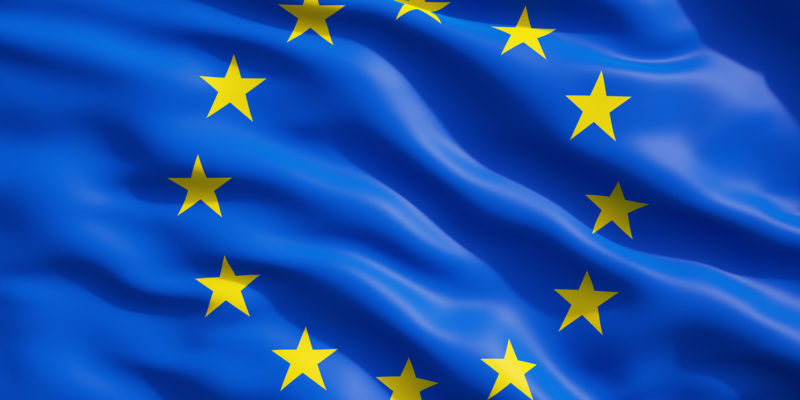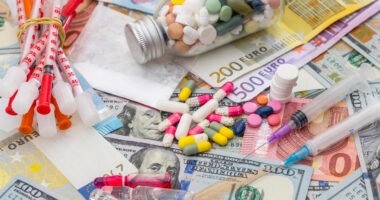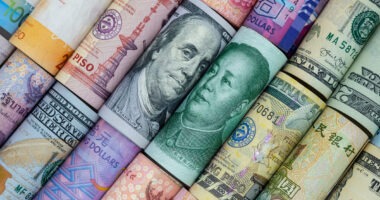Chemicals Mfg: Is Hydrogen Power a Solution in the EU’s Energy Crisis?
The European Commission has approved $131 million to BASF to support its production of renewable hydrogen, with the aims of decarbonizing its chemical production processes. Is hydrogen power a solution to the EU’s energy crisis?
The European Commission approved earlier this week (October 3, 2022) EUR 134 million ($131 million), as part of European Union (EU) member state aid, to support BASF in the production of renewable hydrogen, with the aims of decarbonizing its chemical production processes and of promoting hydrogen use in the transport sector. The measure contributes to realizing targets under the EU Hydrogen Strategy, a plan to increase the use of hydrogen as a power source to help decarbonize the EU’s energy systems and the European Green Deal, the EU’s climate policy to reach net zero greenhouse gas emissions by 2050 with intermediary goals in place before then, while helping reduce dependence on Russian fossil fuels and fast forward the green transition in line with the REPowerEU Plan, a plan by the EU to reduce dependency on Russian fossil fuels.
The EU’s strategy on hydrogen
The EU strategy on hydrogen was adopted in 2020 and put forward a vision for the creation of a European hydrogen ecosystem from research and innovation to scale up production and infrastructure. The EU strategy on hydrogen is focused on producing and using renewable hydrogen to help decarbonize the EU economy in a cost-effective way, in line with the European Green Deal, and contribute to the post-COVID-19 economic recovery. The strategy has 20 action points that were implemented by the first quarter of 2022.
The strategy includes a “hydrogen accelerator” concept to scale up the deployment of renewable hydrogen, which will contribute to accelerating the EU’s energy transition and decarbonizing the EU’s energy system. The REPowerEU plan’s ambition is to produce 10 million metric tons and import 10 million metric tons of renewable hydrogen in the EU by 2030, a substantial increase from the 5.6 million metric tons foreseen within the revised Renewable Energy Directive, published in July 2021.
The focus of these actions is to accelerate the uptake of renewable hydrogen, ammonia, and other derivatives in hard-to-decarbonize sectors, such as transport, and in energy-intensive industrial processes. Scaling up the development of hydrogen infrastructure and supporting hydrogen investments are also identified as key areas to support hydrogen uptake in the EU.
In May 2022, the European Commission launched two consultations on two delegated acts clarifying EU rules applicable to renewable hydrogen under the 2018 Renewable Energy Directive. The first proposal covers renewable fuels of non-biological origin and sets the criteria for products that fall under the “renewable hydrogen” category. The second proposal puts forth a detailed scheme to calculate the life-cycle emissions of renewable hydrogen and recycled carbon fuels to meet the greenhouse gas emission reduction threshold set in the EU Renewable Energy Directive.
The REPowerEU plan also commits to complete the first Important Projects of Common European Interest (IPCEIs) on hydrogen. The first IPCEI, called “IPCEI Hy2Tech”, which includes 41 projects and was approved in July 2022, aims at developing innovative technologies for the hydrogen value chain to decarbonize industrial processes and the mobility sector, with a focus on end-users. In September 2022, the European Commission approved “IPCEI Hy2Use”, a second project which complements IPCEI Hy2Tech and which will support the construction of hydrogen-related infrastructure and the development of innovative and more sustainable technologies for the integration of hydrogen into the industrial sector.
BASF’s hydrogen power project
BASF’s hydrogen project was selected by Germany in the context of an open call to form part of an IPCEI on hydrogen technologies and systems, which resulted in the two approved IPCEIs. However, given its characteristics and objectives, EU officials decided it was better suited for assessment under the EU’s 2-2022 guidelines on EU member state aid for climate, environmental protection and energy. The new guidelines, which took effect in January 2022, create a flexible, fit-for-purpose enabling framework to help EU member states provide the necessary support to reach the EU Green Deal objectives in a targeted and cost-effective manner. The guidelines specify areas that qualify the aid, such as for reduction of greenhouse gas emissions, including through support for renewable energy, energy efficiency measures, aid for clean mobility, infrastructure, circular economy, pollution reduction, protection and restoration of biodiversity, as well as measures to ensure security of energy supply, subject to certain conditions.
Aid to Germany will support BASF’s production of renewable hydrogen mainly to replace fossil-based hydrogen in BASF’s chemical production processes. Additional renewable hydrogen produced will be delivered for emerging hydrogen mobility applications (e.g., hydrogen-powered trucks or buses). The aid, which will take the form of a direct grant, will support the construction and installation of a large-scale electrolyzer at BASF’s manufacturing site in Ludwigshafen, Germany, and will have an annual production capacity of 54 MW and produce approximately 5,000 metric tons of renewable hydrogen and 40,000 metric tons of oxygen per year. The electrolyzer is envisaged to start operating in 2025.
The project is expected to avoid the release of 565,305 metric tons of carbon dioxide over the 15 years of expected operation of the electrolyzer. In addition, to maximize the reduction of greenhouse gas emissions, renewable hydrogen will be produced solely with electricity stemming from renewable sources.
The BASF project was one of two projects approved by the European Commission this week (week of October 3, 2022) to apply hydrogen as a source to power industrial production. The European Commission also approved a EUR 1 billion ($980 million) grant to help Salzgitter Flachstahl GmbH, a steel producer, to decarbonize its steel production processes by using hydrogen, including renewable hydrogen produced on site, with the addition of a new production facility. The aid will support the construction and installation at the company’s site in Salzgitter in Lower Saxony, Germany, of a direct reduction plant and electric arc furnace to replace one of the blast furnaces currently operated by Salzgitter. This will allow the company to substitute the use of fossil sources (i.e., coal used for iron ore reduction) with hydrogen in steel production, thereby avoiding almost all direct carbon dioxide emissions in steel production. The new installation will produce in a greener manner approximately 1.9 million metric tons per year of crude steel, the same volume of crude steel currently produced via fossil fuel production.
The project will also support the construction and installation of a large-scale (100 MW) electrolyzer, which will produce approximately 9,000 metric tons of renewable hydrogen per year. The hydrogen produced by the electrolyzer will be used as feedstock in the direct reduction plant. The electrolyzer, the direct reduction plant, and the electric arc furnace are envisaged to start operating in 2026. Once completed, the project is expected to avoid the release of 3.6 million metric tons of carbon dioxide annually. In addition, to maximize the greenhouse gas emissions’ reduction, the generated hydrogen will be produced solely with the electricity stemming from renewable sources.
The EU’s hydrogen strategy and the European Green Deal
The EU’s strategy on hydrogen not only includes the “hydrogen accelerator,” which as earlier described in this article, seeks to accelerate the uptake of renewable hydrogen, ammonia, and other derivatives in hard-to-decarbonize sectors, such as transport, and in energy-intensive industrial processes, but the establishment of the Hydrogen Energy Network. he Hydrogen Energy Network is an informal group of representatives from the energy ministries in EU countries that aims to help national energy authorities build on the opportunities offered by hydrogen as an energy carrier. It acts as an informal platform to share information on good practice, experience and latest developments in hydrogen, and to work jointly on specific issues. The Hydrogen Energy Network meetings take place twice a year.
Within the hydrogen accelerator measures, the European Commission proposes to establish a global European hydrogen facility to create investment security and business opportunities for European and global renewable hydrogen production. To this end, green hydrogen partnerships will also facilitate the promotion of the import of renewable hydrogen from third countries and contribute to incentivizing decarbonization. Together, the global European hydrogen facility and the green hydrogen partnerships aim at delivering a framework to ensure that partnerships established by the EU countries and the industry provide a level-playing field between EU production and third-country imports.
The EU’s strategy on hydrogen is part of the EU’s larger climate policy, the European Green Deal. With the European Green Deal Communication in 2019, the European Commission reinforced its climate ambitions, setting an objective of net zero emissions of greenhouse gases in 2050. The European Climate Law in force since July 2021, which enshrines the 2050 climate neutrality objective and introduces the intermediate target of reducing net greenhouse gas emissions by at least 55% by 2030, sets the ground for the ‘Fit for 55′ legislative proposals presented by the European Commission in July 2021. Among these proposals, the Commission presented amendments of the Renewable Energy Directive and the Energy Efficiency Directive with more ambitious binding annual targets to increase the production of energy from renewable sources and reduce energy use at the EU level.






